The 1st Crick-Beddington Developmental Biology Symposium: Meeting Summary
Posted by Alex Eve, on 15 February 2019
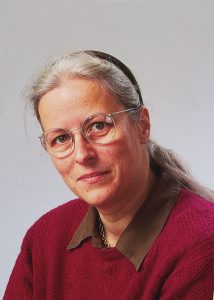
The Francis Crick Institute held the 1st Crick-Beddington Developmental Biology Symposium last week, beginning on Monday the 4th of February. The two-day meeting was held in honour of the memory of leading UK embryologist, Rosa Beddington FRS (right), head of the Division of Mammalian Development at the MRC National Institute for Medical Research (NIMR) from 1993 until 2001. The symposium promised to be an inspiring meeting full of fond memories and first-class science, featuring fifteen invited plenaries – many of whom were colleagues of Rosa Beddington.
In addition to her pioneering work on mouse embryology, Rosa is also widely known for her scientific drawings and lab-book sketches. Her artistic talents are immortalised in her design of the British Society for Developmental Biology’s Waddington Medal and the BSDB later used one of Beddington’s artworks featuring mice on a DNA helix for the Beddington Medal.
I always enjoy a visit to the Crick. Although I have never worked in the building, I studied my PhD at the NIMR in Mill Hill so in some ways the Crick feels the closest thing to home. It was great to see some familiar faces and catch up with old friends. This was also my first visit to the Crick as a Reviews Editor for Development, so I was also looking forward to meeting new colleagues for the first time and being inspired by talented speakers on a diverse range of topics.
Sessions were interspersed with lunch and refreshment breaks in the Manby Gallery, which featured a poster session of around 30 posters. Lunch also included an opportunity to look around the exhibits from sponsors and to stop and watch a slideshow of Rosa’s artwork, which had been collated together from archives, friends and colleagues.
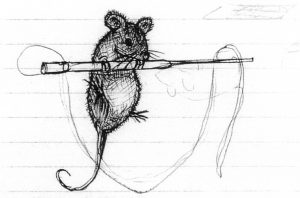
The symposium began with opening remarks from organiser Alex Gould. Alex spoke of Rosa Beddington’s legacy both to science and community, and reminisced about his own history with Rosa, who had hired him to join the NIMR. Alex also introduced the official Twitter hashtag—#CrickBeddington2019—to use throughout the symposium. Take a look for more Tweets, summaries and discussion from the event.
“Often, when I have to make a difficult decision, I wonder what Rosa would have done.”
Alex Gould
The first plenary speaker of the symposium, Elizabeth Robertson, began by sharing her fond memories of working with Rosa. Although, initially, Liz thought Rosa was “really super scary” they became good friends while working as demonstrators at the Cold Spring Harbour Course 1986-1990. During their careers, Rosa and Liz collaborated on research projects during weekends and co-authored reviews, for which Rosa illustrated the figures. Liz discussed how Nodal signalling “makes heads and tails of the early mouse embryo” and regulates the fate of precursor primordial germ cells. Concluding her talk with a photo of Rosa that hangs in the Dunn School of Pathology, Liz provided a final sentiment to Rosa, stating that she “sees her every day”.
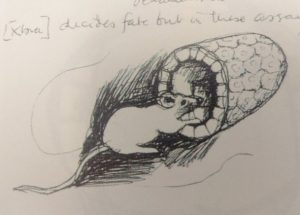
Rosa’s favourite model, the mouse, featured in a number of other talks during the symposium. Tristan Rodriguez, a former Post Doc in Rosa’s lab, discussed the role of p53 and mTOR signalling in eliminating unfit cells. Tristan demonstrated that cells are capable of sensing subtle differences in mitochondrial performance to determine cell fitness. Sally Dunwoodie showed that the human HAAO/KYNU phenotypes (genes that encode enzymes of the kynurenine pathway) are caused by NAD deficiency. HAAO/KYNU mutant mice are phenotypically normal unless fed a diet low in vitamin B3, providing a model for NAD deficiency and an example of gene-environment interaction in development. In the final talks of the symposium, Hironobu Fujiwara presented live imaging data used to identify the elusive hair follicle stem cell progenitors, which form concentric rings within the basal epidermal cells of the mammalian skin, and Kat Hadjantonakis shared data from carefully controlled single-cell sequencing experiments, revealing the extra-embryonic or embryonic origin of cells in the mammalian gut tube.
Far from being mouse-centric, however, a variety of other model organisms were showcased. Kate Storey began with what is possibly the only illustration of a chicken drawn by Rosa Beddington and described the chromatin dynamics that occur during chick neuromesodermal progenitor differentiation in response to FGF/ERK signalling. Steve Wilson presented beautiful confocal images of the zebrafish brain and demonstrated the role of the parapineal gland in establishing habenular asymmetry for light and odour response. Steve also advocated for the study of behaviour as a read-out for phenotype. In a second appearance from the Wilson lab, Rodrigo Young presented a project that “began with a mutant without a phenotype” and showed that tcf7l1a zebrafish mutants have prolonged proliferation to develop normal size eyes despite a 50% reduction in the eye field. Can Aztekin (a PhD student in John Gurdon‘s group) shared single-cell sequencing used to identify a new cell type termed “regeneration-organising cell” (ROC), which migrate to amputated sites and are required for Xenopus tail regeneration.

Human development also featured; Pierre Vanderhaeghen presented exciting new data that indicates mitochondrial dynamics influence the differentiation of neural progenitors to neurons in the human cortex and Ana Pombo discussed the advantages of using genome architecture mapping (GAM) to understand 3D genome topology at a single-cell resolution, explaining how the technology could be applied to interrogate human systems.
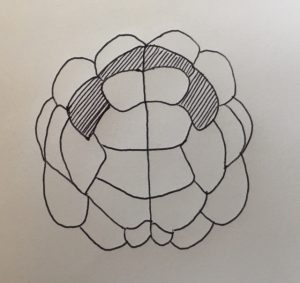
Highlighting new research in invertebrate systems, Roberto Feuda showed that the vast majority of genes expressed in the apical organ of the sea urchin are conserved with Drosophila brain. In addition, brain regionalisation genes are also expressed in restricted compartments of the sea urchin embryo. In addition, Géraldine Williaume (a PhD student from Hitoyoshi Yasuo‘s group) demonstrated how bimodal Ephrin/Eph signalling can integrate graded ERK and FGF signals to specify ascidian neuronal cells.
Regulation of developmental size was a recurring theme during the symposium. On the first day, Cassandra Extavour reminded us that all projects should start in the library. Her lab has used machine reading to compile a database for challenging long-held hypotheses about insect egg shapes and sizes. Ultimately, ecology is a better determinant of egg size and shape than developmental rate or “cost” ratios. On the second day, Jochen Rink shared recent data on mechanisms of size and scaling, exploiting the striking ability of planarians to increase and decrease up to 40-fold in size and concluding that size depends on the relationship between mass and the number of cells. Finally, Patrick Müller demonstrated how in vivo data and mathematical models can be used to understand rapid, proportional scaling of morphogen gradients during embryogenesis and entertained the audience with his “drunken sailor” analogy of morphogen dispersal.
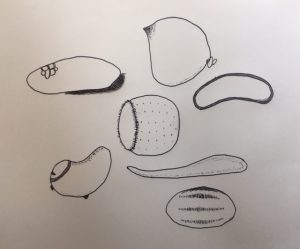
Indeed, mathematical models were utilised by a number of speakers. Cerys Manning, a Sir Henry Wellcome Fellow in Nancy Papalopulou’s lab, revealed how mathematical models can be used to explore Hes-oscillations and determine the parameters for cells to transition into oscillatory patterns of gene expression. In addition, James Sharpe began his talk with a tribute to Rosa and the NIMR and revealed new approaches for the mathematical modelling of limb development, which included a detailed staging method for the mouse limb bud.
Finally, I was excited to hear about development “beyond the embryo” with two talks on ageing. In a fascinating talk, Scott Pletcher shared unpublished data revealing healthy flies have reduced longevity when visually exposed to other naturally deceased flies. These data suggest the existence of neural states that influence ageing and physiology through sensory perception. In addition, Dario Riccardo Valenzano introduced the benefits of using the short-lived turquoise killifish as a model and showed that as killifish age, the diversity in the microbiome and B-cell antibodies decreases. Interestingly, colonisation of the gut of microbiota from young fish can increase longevity in middle-aged animals.
Jean-Paul Vincent concluded the symposium by thanking the speakers, the Crick Events team, sponsors and co-organisers; Rita Sousa-Nunes from King’s College London, and James Briscoe and Alex Gould from The Francis Crick Institute. Finally, he announced that the 2nd Crick-Beddington Developmental Biology Symposium will be in two years’ time, in 2021. I hope that the 250 attendees will join me in thanking the organisers for their effort in putting the symposium together, chairing sessions and making sure it was an enjoyable event for all. I also thank all the speakers for sharing their stories, both scientific and otherwise, to make this a personal and sincere tribute to Rosa Beddington.


 (4 votes)
(4 votes)